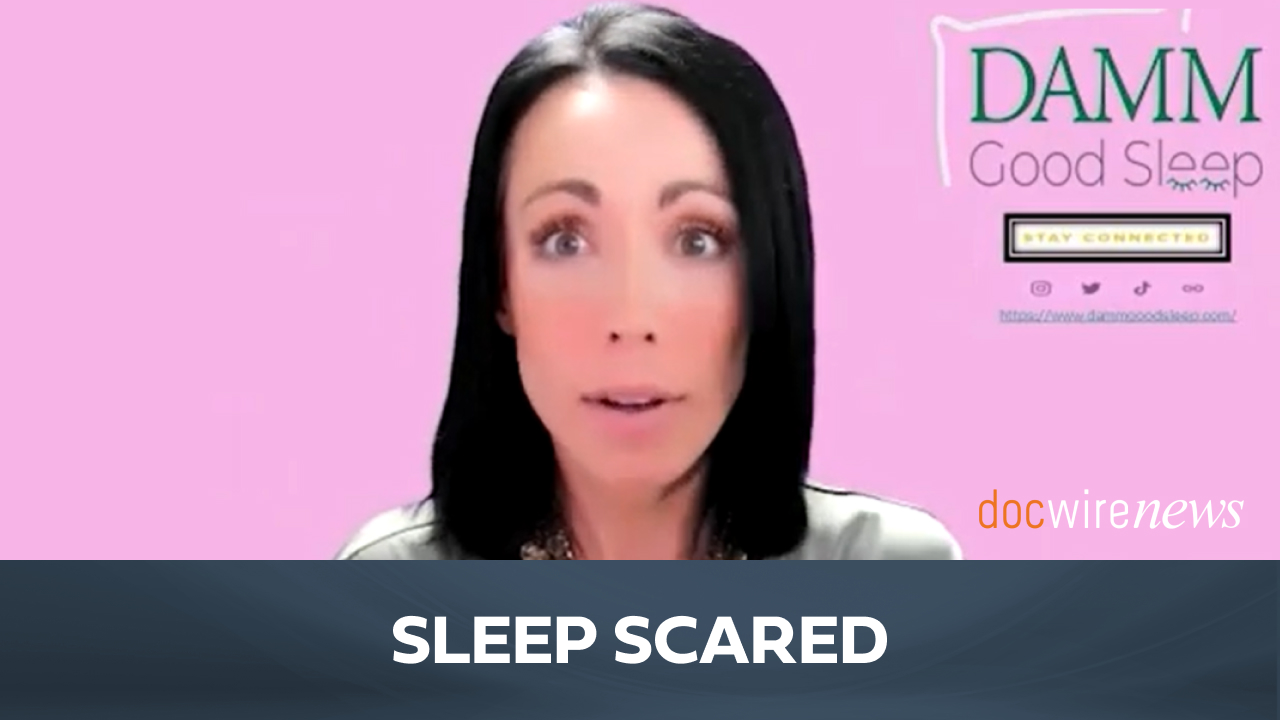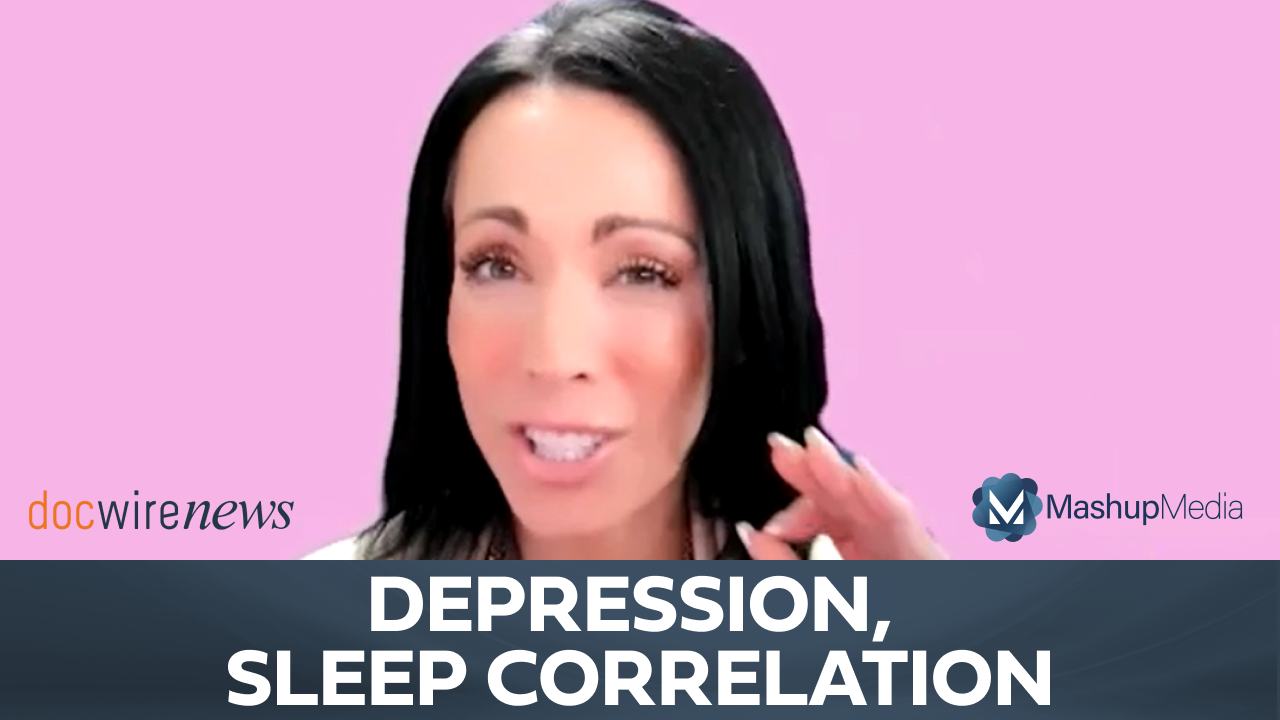Ziv Peremen, CEO of Xtrodes: An Innovator of Wearable Sleep Monitoring Technology
By Rob Dillard - Last Updated: June 13, 2023X-trodes has developed the first customizable and wireless wearable technology to bring advanced medical-grade sleep monitoring and analytics to the comfort of patients’ homes. While other companies in the space primarily focus on sleep apnea, X-trodes user-friendly solution monitors patients for a wide range of sleep disorders, enabling a significant reduction in the diagnosis timeline and at lower cost compared to traditional sleep assessments.
DocWire News sat down with the company’s CEO, Ziv Pereman, to learn more about this innovative company and its technologies.
DocWire News: Can you give us some background on yourself, and the company you founded, X-trodes?
Sure. First of all, thank you for giving me this opportunity today. I’m Ziv Peremen, the CEO and co-founder of X-trodes. I actually started my journey with starting physics and philosophy and then I completed a PhD, in neurocognitive science. And over the last 12 years I’ve focused on the interjunction between data and physiology. This is what I’m excited for.
At the beginning it was only the brain, data for brain and I expanded. And over the years there are more and more parts of our body that I’m interested in, and the current journey of X-trodes actually started several years ago. I met an amazing professor, Yael Hanein. She used to be the head of the nanotechnology center at Tel Aviv University. She’s a world expert in the field of human machine interface and I’ve asked her if she can find a solution for all this cumbersome equipment that we need in order to measure our brain.
It took her five years, but once she brought the solution it was so elegant, so beautiful, and we both decided that, okay, there is something huge going on here. And we decided to establish X-trodes. So three years ago we established X-trodes, and since there we are in this exciting journey together.
Talk to us about the importance of understanding sleep behaviors, and challenges of traditional sleep analysis and diagnosis solutions.
Sleep is important. Actually, it’s super important. Most of us spend almost a third of our life during sleep. And unfortunately, more than 40% of the population actually suffers from poor sleep. And we can say, okay, poor sleep. It’s affecting our quality of life. We have a hard day after a bad night, but it’s not only quality of life. There is so much going on during sleep that affects our brain, our cognition, our immune system, our health. And once we start to understand it, that sleep, it’s not a luxury. Sleep in a way is a key for our health.
Once we start to understand it, and it seems that the clinical society and the academia start to understand the importance of sleep. For many years, but this notion increased over the last three years. We start to understand that all these 40% that I mentioned before suffer from poor sleep. There is a huge impact on their daily life and on their health. And when we start to see what we can do with health. So most of us are familiar with taking some sleeping pills, but it’s not enough. There are so many aspects of our sleep that could impair or could be changed or could be transferred during time, during our age, during our stage of life. And without understanding what’s going on during our health, we have poor tools in order to treat it in a proper way.
So I will say that sleep is a key for our quality of life, wellness, and our health. And I think that we understand that we need to have a better diagnosis too for sleep than we have today. And how we can measure sleep today, I think that most of you are familiar with sleep studies. So this is the medical solution in order to measure sleep. I will get to this, it’s called PSD, polysomnography. But we see that there are more and more tools available for us as consumers. We are familiar with rings, watches, mattresses, and many other solutions. But all these solutions are wellness solutions. They don’t give you the medical grade information that you need in order to have a real diagnosis of your sleep.
We have another group, very good and very successful group of tools that you can measure at home your sleep, mainly for sleep apnea. To measure your snoring and all kind of breathing issues. These are very good tools. However, they’re focused on one or two disorders. There are more than 40 different sleep disorders today. And you can double the number if you also relate it to other clinical disorders related to sleep. So besides the wellness solution and the sleep apnea solutions, today you must to the clinic to have a sleep study. You must go to the hospital, spend the night in the hospital connected to the 30 electrodes, actually sleep in someone else’s bed. This is the golden standards that we have today.
I would say for me, I was shocked from the numbers that I’ve learned that from this test there are more than 30% of these tests that actually fail. So you go to the hospital or you take your child to the hospital, you spend the night there. And after all this activity, all this effort and the child couldn’t get to sleep in the hospital, or he moved too much because it’s not his bed. And you don’t have the result after such an effort. So we do understand that today there is a real need to find a way to measure it. Not in the hospital at home. Not a single night, several nights. To make our sleep mapping accessible for all of us. This is what we find that is missing today in sleep.
What solution does X-trodes offer for sleep challenges?
We developed a unique solution. We call it smart. Smart Skin is actually multi sensors that we can attach to our skin. It’s like a Band-Aid and it measures our electrophysiology signals of our body. And our body generates an electrical signal from our brain, from our muscle, from our heart, from our eyes. And with this Smart Skin we actually measure all this information from your skin. So our solution consists from these unique sensors that allows to measure our skin and algorithms that allow us to reduce the noise that we have in the home environment.
You have all kind of noise, electrical noise from your phone, from electricity socket, from the partner near you. So the solution of this unique sensor on one hand and the unique algorithms give us a solution that was unavailable until today. I hope that you can see it. This is an example of one of our sensors. It’s a dry sensor. Unlike the hospitals that you need to have all kind of gels or paste in order to attach it to the skin, this is our sensor. It’s like a Band-Aid, and if I will take it out, you will see how flexible and stretchable is. It’s actually more flexible and softer than our skin.
So we attach it to our skin like you can see here, we can attach it to the skin. I connect it to a small device with electronic battery and Bluetooth device. See it here. And that’s it. Once I have the signal on me, I have the sensor connected to my body, we can get the signals on another device, either a tablet or a phone. So basically these simple electrodes that I can locate it on our head, on our hand, on our chest, replace all the electrodes and the cumbersome equipment that we are familiar today from the sleep study.
This solution allows us to attach it to patients and healthy participants to measure the sleep, the brain activity, the heart activity, the muscle activity, and generate all this information remotely to the physician. And they can measure it for one, two, three days, a week. They can actually use it not only for diagnosis, they can start some kind of treatment to see whether the sleep improved. They can change all kind of wellbeing parameters in life. They can have nutrition change, exercise to see whether the sleep actually improved.
They had a tool to take to their home and actually measure the sleep in a medical grade level for long term. It’s not a short-term measurement, it’s a full night, several nights. At home with full accessibility for this device and the data access to the physician. This is our solution, what we call Smart Sleep.
What are other areas of application for the technology?
X-trodes provides a platform. It’s a unique platform in order to measure electrophysiology, all the signals that I mentioned before, brain, muscle, heart activity, and bring it into the natural environment. We are taking this super sensitive sensor that today are measured in the hospitals in very controlled area, very isolated room. And we take it to the most noisy environment that we can imagine, our home, to go our natural environment. So this is where we are heading, this is where we are planning to bring our platform.
Today in the health system we identified more than 100 different applications that are used today. Electrophysiology tools in the hospitals. Our aim is to bring solutions for this application, or at least for most of them, and to make it accessible also for home use. So we can imagine all kind of applications. Sleep is our first application. We can also talk about muscle measurement. With this electrode surface EMG we can measure muscle fatigue synchronization and we can shorten rehabilitation process after injury. For example, knee injury or back injury or after surgery.
We can also provide notifications for an athlete when he uses it, when the muscle gets to a specific threshold, it increases the chance for injury. But there are so many other application on top of it. It could be relevant for epilepsy. Today patients spend days, a week in the hospital in order to monitor the epilepsy seizures. We can have a solution for home use. Today there are people that use all kind of halters with cables and all other cumbersome equipment to measure their heart, who can provide the solution for this.
There are so many applications that we can use it for health, and I think that even beyond health. I’m not sure beyond health would be the right term, but we do understand that the world is changed, especially after the COVID. And people try to find solutions in order to prevent the next disorder. In order to treat them, to keep them healthy. So I believe that we can use the tool for the current disorders that we have today in the hospitals. But I also think this tool could help us in the fields that we called wellness or between health and wellness, the prevention. In order to keep us all in a better condition, to improve our quality of life and awareness. So I do think there is a huge potential in many applications for such a technology.







 © 2025 Mashup Media, LLC, a Formedics Property. All Rights Reserved.
© 2025 Mashup Media, LLC, a Formedics Property. All Rights Reserved.